German Pinscher (Deutscher Pinscher): The Elegant Guardian of German Heritage
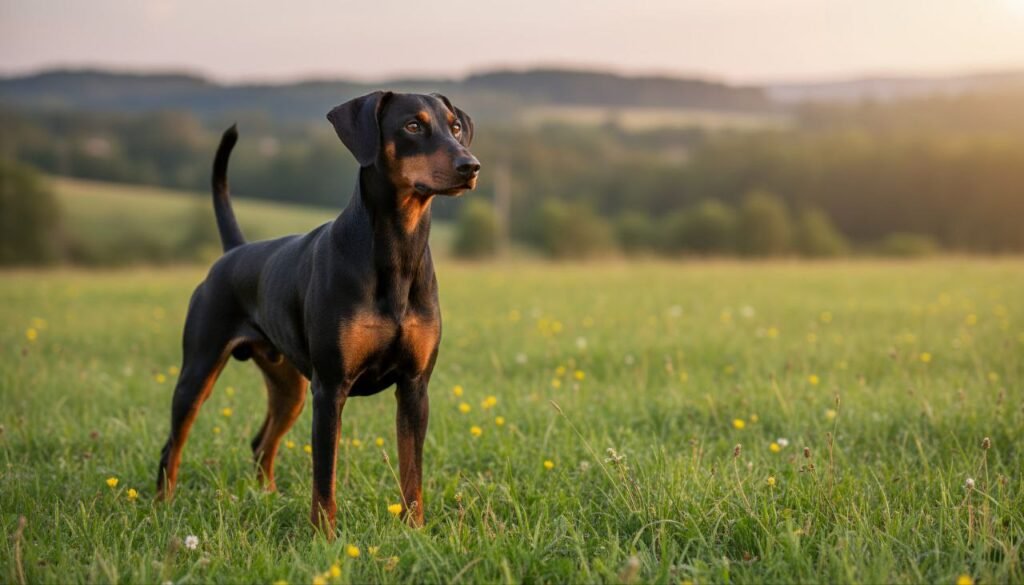
The German Pinscher, or Deutscher Pinscher as it’s called in its homeland, is a medium-sized, athletic dog known for its intelligence, elegance, and bold personality. Often described as one of the dog world’s best-kept secrets, this breed is beloved by those who appreciate an energetic, devoted companion with a working-dog mindset.
This proud and powerful breed is not only a loyal family protector but also a key figure in the history of modern dog breeding, serving as the foundation breed for both the Miniature Pinscher and the Doberman Pinscher.
Breed Name and Cultural Context
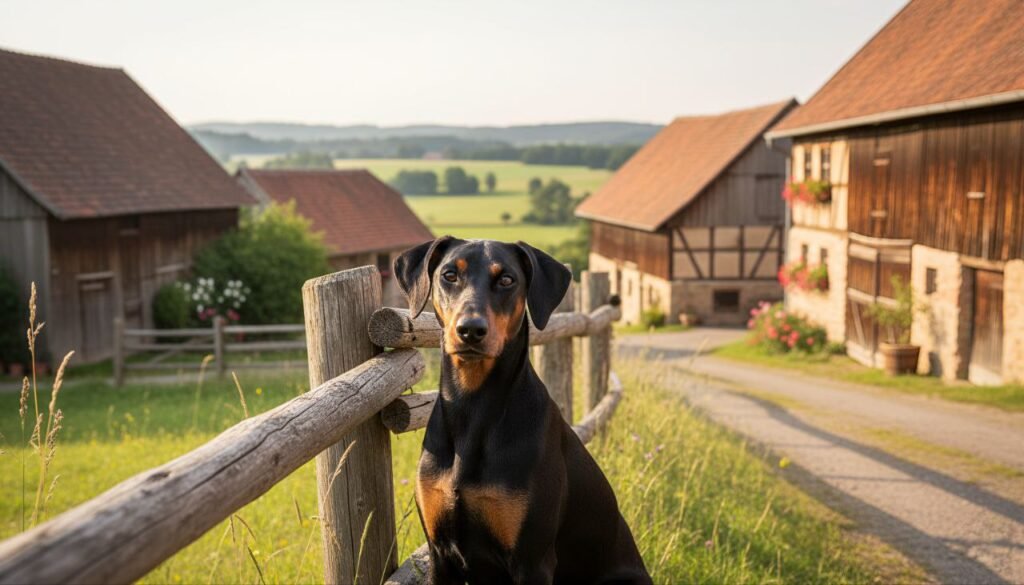
| Language/Context | Breed Name |
|---|---|
| English | German Pinscher |
| German | Deutscher Pinscher |
| FCI Standard No. | 184 (Group 2: Pinschers & Schnauzers) |
The name Pinscher comes from the German word meaning “terrier-like” or “biter,” reflecting the breed’s historical use as a ratter and guard dog. Though its sleek look may remind you of a Doberman or Miniature Pinscher, the Deutscher Pinscher is a distinct breed, standing solidly between the two in size and temperament.
Historical Background
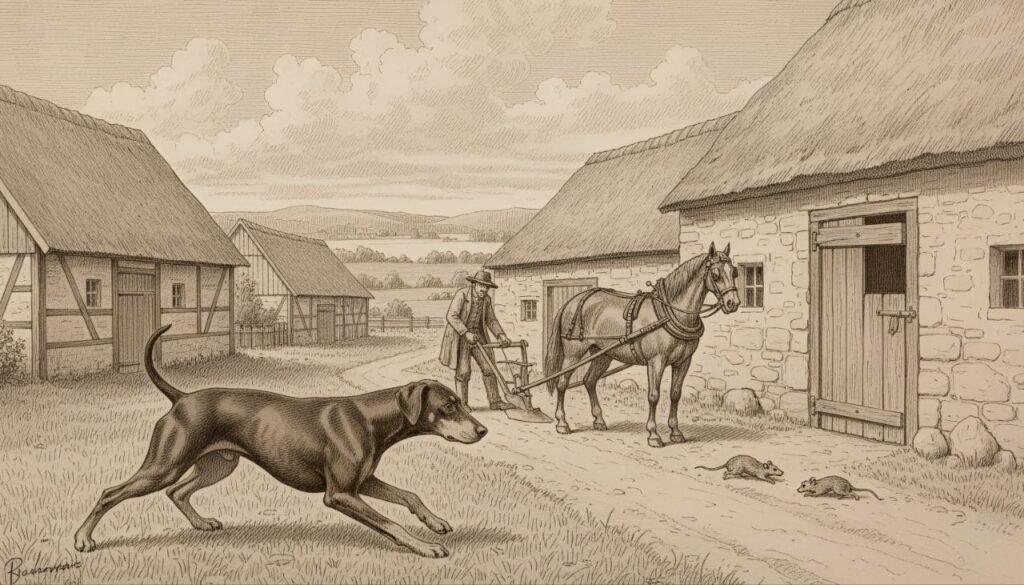
The Deutscher Pinscher dates back to the 15th and 16th centuries in Central Europe, especially Germany, where it was developed to serve as a multi-purpose farm dog: guarding homes, hunting rats, and protecting carriages.
Early German Pinschers were often housed in stables to control vermin, much like terriers in Britain. They were originally part of the same lineage as the Standard Schnauzer — the only difference was coat type (smooth for Pinschers, wiry for Schnauzers).
The breed nearly went extinct after World War II, but thanks to the dedicated efforts of German breeder Werner Jung in the 1950s, the breed was carefully reconstructed and saved from oblivion.
Physical Characteristics
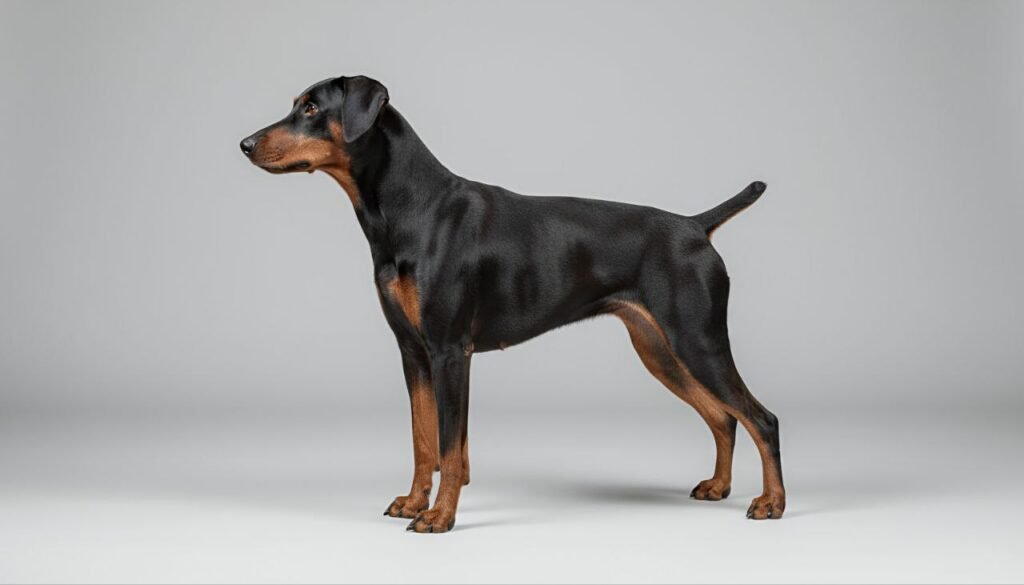
| Trait | Details |
|---|---|
| Size | Medium |
| Height | 17–20 inches (43–51 cm) |
| Weight | 25–45 pounds (11–20 kg) |
| Build | Square, muscular, athletic |
| Coat | Short, dense, smooth, glossy |
| Color Varieties | Black & tan, red, stag red, blue & tan, fawn |
| Lifespan | 12–14 years |
With their square proportions, high-set ears, and graceful gait, the German Pinscher commands attention. Their alert expression and sleek, powerful bodies highlight both agility and strength.
Temperament and Personality
Intelligent and Independent
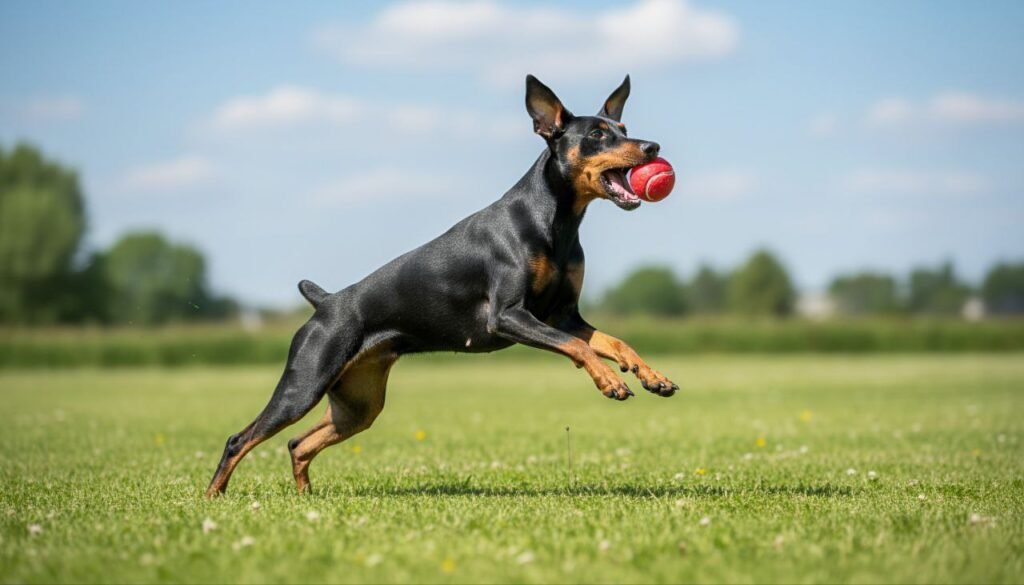
The Deutscher Pinscher is highly intelligent and often described as a quick thinker. This independence makes them capable of problem-solving — but also means they can be stubborn.
Loyal and Protective
They form strong bonds with their families and are naturally protective. Their sharp senses and natural suspicion of strangers make them excellent watchdogs, though proper socialization is crucial.
⚡ Energetic and Playful
This breed is very energetic and playful. They need structured exercise and interactive play to stay mentally and physically fit.
Confident (Sometimes Dominant)
German Pinschers are confident and assertive. Without leadership and consistent training, they may challenge authority or become territorial.
Training and Socialization
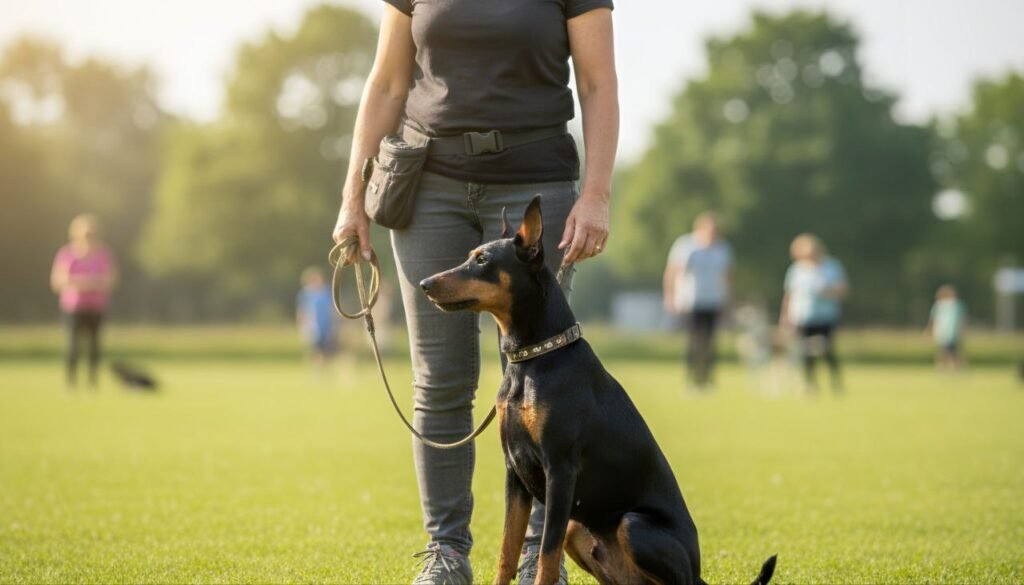
Training a German Pinscher requires confidence, patience, and consistency. They are best suited to experienced dog owners who can enforce rules through positive reinforcement and firm leadership.
Training Tips:
- Start early, ideally in puppyhood
- Be calm, consistent, and assertive
- Use reward-based methods (treats, praise, play)
- Avoid harsh corrections or repetitive drills
- Socialize with people, pets, and environments from an early age
They excel in dog sports such as agility, obedience, scent work, and rally.
Exercise Needs
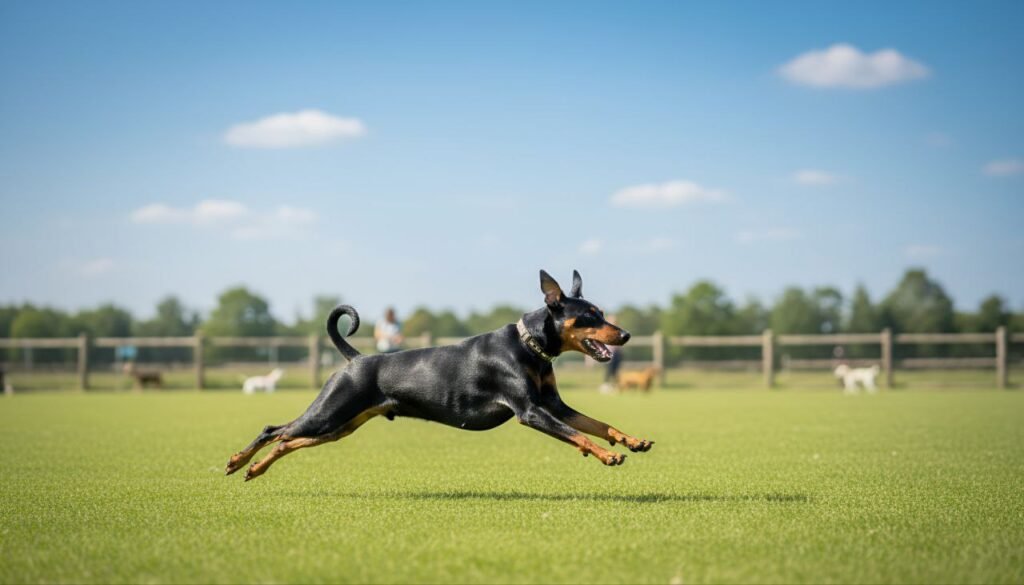
German Pinschers are built for action. They need at least 60–90 minutes of daily physical and mental activity, including:
- Brisk walks or runs
- Agility or obedience exercises
- Puzzle toys and interactive games
- Off-leash play in secure areas
Without sufficient stimulation, they can become bored, vocal, or destructive.
Grooming and Care
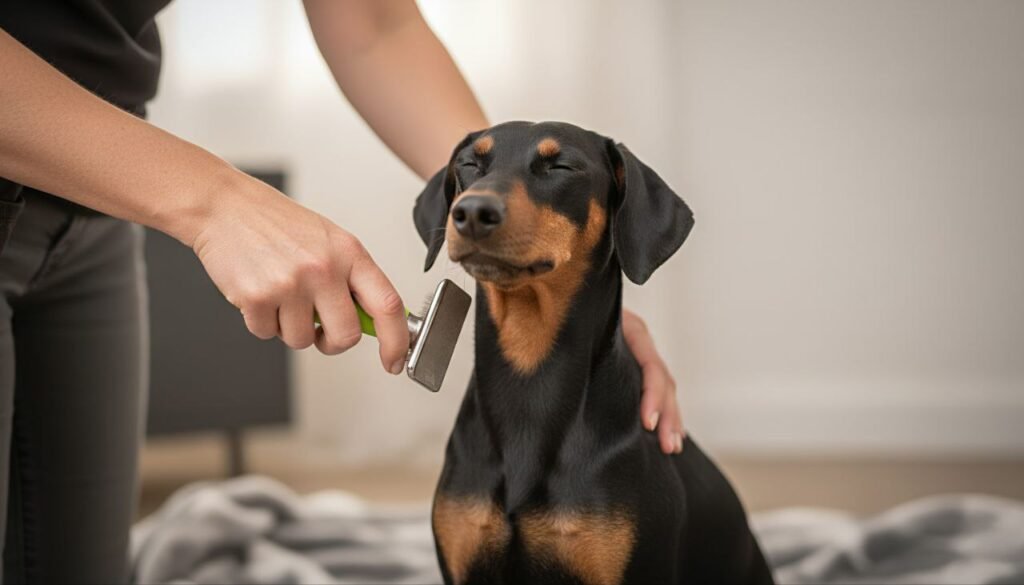
Low-Maintenance Coat
Their short, dense coat requires minimal grooming.
- Brushing: Weekly with a rubber mitt or soft brush
- Bathing: As needed (usually monthly)
- Nails: Trim every 2–3 weeks
- Ears: Clean weekly to prevent infections
- Teeth: Brush several times a week
They are considered moderate shedders, and have little to no doggy odor.
Health and Longevity
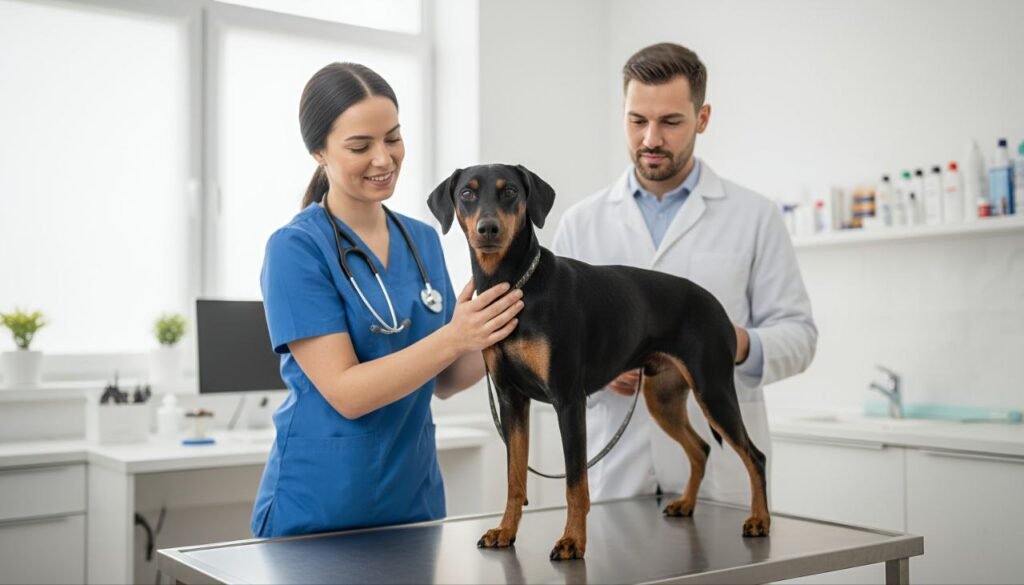
The German Pinscher is generally a healthy, robust breed, especially when sourced from ethical breeders who conduct health testing.
Potential Health Issues:
- Hip Dysplasia
- Heart conditions (e.g., dilated cardiomyopathy)
- Eye issues (e.g., cataracts)
- Von Willebrand’s disease (a bleeding disorder)
Routine veterinary care, a high-quality diet, and regular exercise will help ensure a lifespan of 12 to 14 years, sometimes longer.
Living Environment
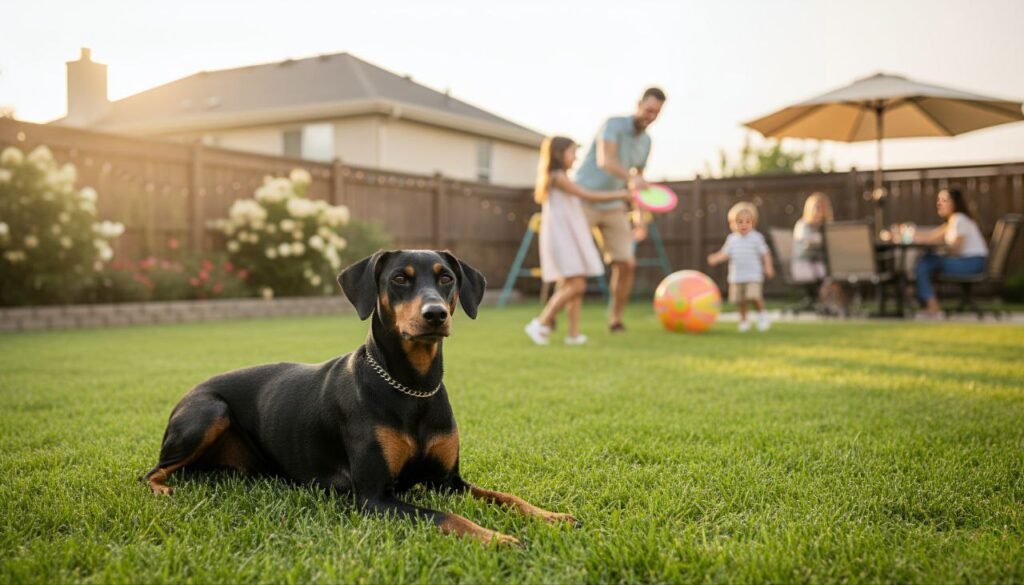
- Best for: Active singles, couples, or families with older children
- Yard: Preferred but not required if exercised sufficiently
- Apartment living: Possible with consistent mental/physical stimulation
- Other pets: Can coexist peacefully with early socialization
Note: Due to their strong prey drive, early socialization with small pets (e.g., cats, rabbits) is essential.
German Pinscher vs. Related Breeds
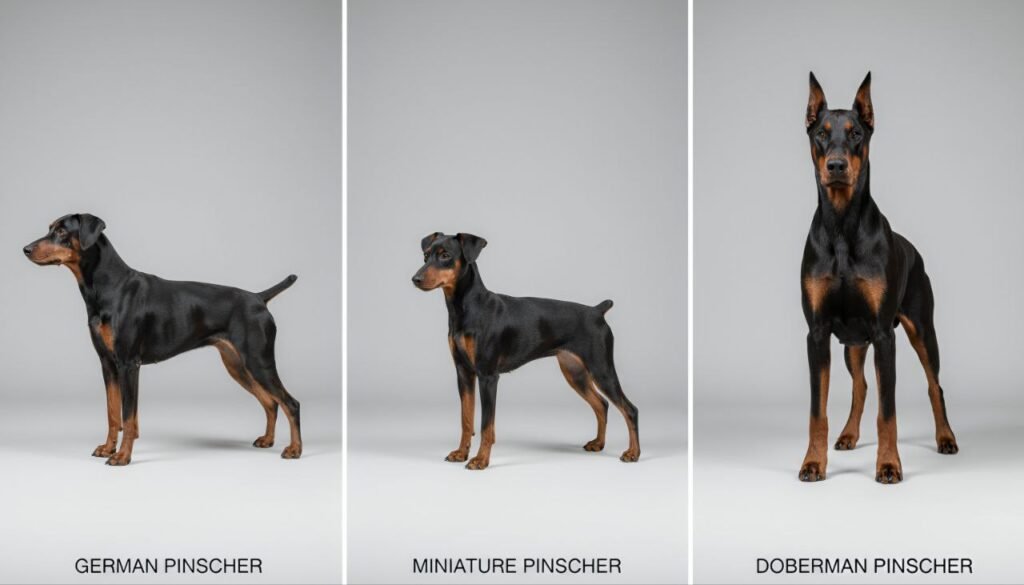
| Breed | Size | Key Traits |
|---|---|---|
| Miniature Pinscher | Small | Lively, more terrier-like, toy-sized |
| Doberman Pinscher | Large | Protective, intense, strong guarding drive |
| Standard Schnauzer | Medium | Related breed; shares ancestry |
| Manchester Terrier | Medium-Small | Sleeker, more reserved, less dominant |
The Deutscher Pinscher strikes a perfect balance — larger and more powerful than a Miniature Pinscher, yet more manageable and less intense than a Doberman.
Breed Recognition
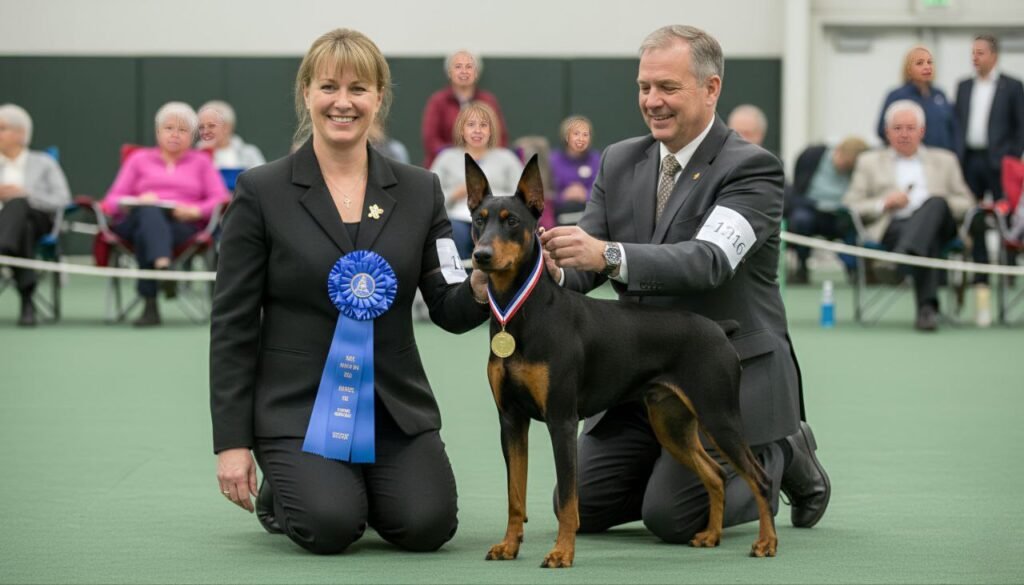
The Deutscher Pinscher is recognized by:
- VDH (Germany) — National kennel club
- FCI — Fédération Cynologique Internationale (Group 2)
- AKC (USA) — Working Group (since 2003)
- UKC — Guardian Dog Group
Is the German Pinscher Right for You?
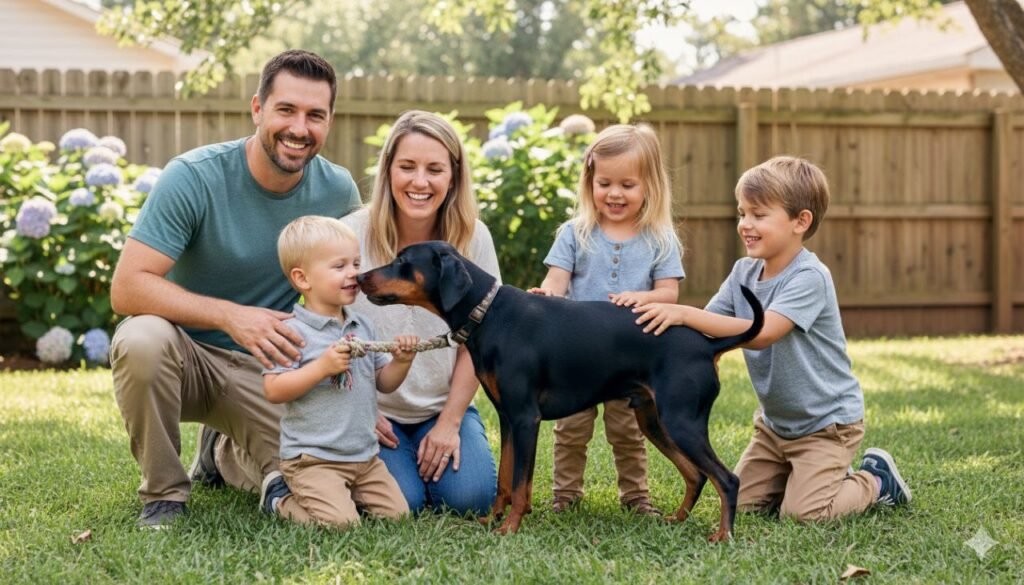
| Great Choice If You… | Think Twice If You… |
|---|---|
| Have previous dog training experience | Are a first-time dog owner |
| Want a loyal, active, and alert companion | Prefer a calm or laid-back dog |
| Enjoy dog sports or outdoor activities | Have little time for daily training/exercise |
| Can offer strong leadership and structure | Don’t enjoy assertive or independent-minded dogs |
The German Pinscher (Deutscher Pinscher) is more than just a beautiful, athletic dog — it’s a piece of German canine history. A fearless guardian, a loving companion, and a spirited athlete, this breed is best suited for experienced owners who can provide consistent training, mental stimulation, and an active lifestyle.
For the right person or family, the Deutscher Pinscher offers an unmatched combination of loyalty, elegance, and sharp intelligence — all wrapped in a sleek, muscular frame.

